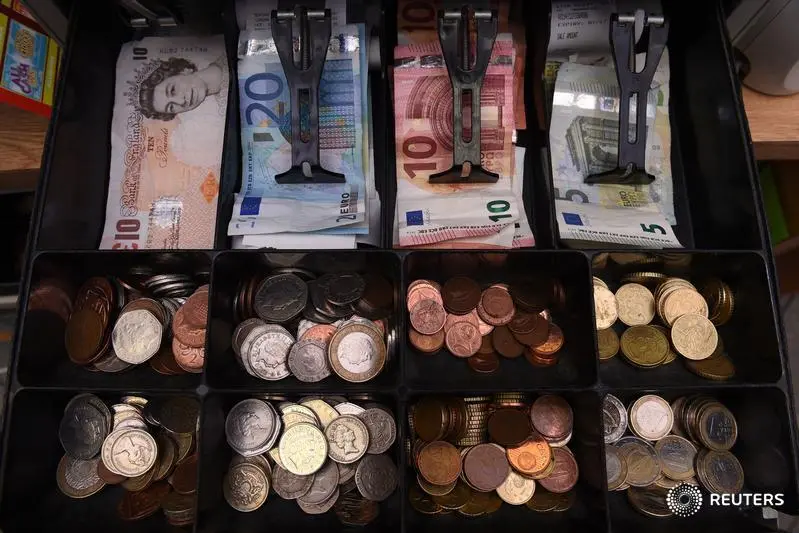PHOTO
A shop cash register is seen with both Sterling and Euro currency in the till at the border town of Pettigo, Ireland October 14, 2016.
Euro zone bond yields dropped on Thursday, as investors sought more clues on the outlook for the global economy and monetary policy after days of volatile trading that pushed yields to multi-month lows earlier in the week.
Germany's 10-year bond yield, the benchmark for the euro zone bloc, fell 4.1 basis points to 2.232%, while the two-year bond yield, which is more sensitive to European Central Bank rate expectations, fell 5.9 basis points to 2.356%.
Yields on both rose on Wednesday, with the 10-year yield marking its biggest daily increase in more than five weeks, as an improvement in broader risk appetite prompted investors to sell bonds. Bond prices move inversely to yields.
Euro zone government bond yields are, however, not far off Monday's multi-month lows after a weak U.S. jobs report late last week ignited fears of an economic downturn that could warrant bigger rate cuts from the Federal Reserve, which in turn gave the U.S. Treasury market a boost.
The unravelling of leveraged trades linked to the Japanese yen, which has benefited in part from expectations of a hawkish pivot from the Bank of Japan (BOJ), also contributed to the big selloff in global stock markets.
A semblance of calm returned to markets on Wednesday after BOJ Deputy Governor Shinichi Uchida said the central bank will not hike interest rates when markets are unstable. The relief however proved short-lived, with stocks in Europe tumbling 1% Thursday and U.S. stock futures under pressure.
"What markets were expecting is the U turn from the BOJ's Uchida would foster risk sentiment and the stock market will grow. But it doesn't seem that it has had that kind of an effect," said Althea Spinozzi, head of fixed income strategy at Saxo Bank.
"We cannot forget that the futures markets are pricing in a very aggressive interest rate cut from the FOMC, and at any point, markets might second guess this notion. So there might be a situation where not only stock markets go lower but also bonds."
Investors will focus on U.S. weekly jobless claims data and speeches from Fed policymakers later on Thursday.
Money markets show traders are pricing in about 112 basis points (bps) of further rate cuts from the Fed by the end of 2024, and 72 bps of cuts from the European Central Bank. The odds stood at about 85 bps and 60 bps, respectively, a week ago.
The German 2-year/10-year yield curve moved to be slightly less inverted on Thursday, with the gap between the two at -12.30 basis points. The U.S. equivalent turned positive for the first time in two years on Monday.
Italy's 10-year yield was lower by 2.8 bps at 3.678%, and the gap between Italian and German bunds widened 1.2 basis points to 144 bps.
(Reporting by Sruthi Shankar in Bengaluru; Editing by Amanda Cooper, Kim Coghill and David Evans)




















